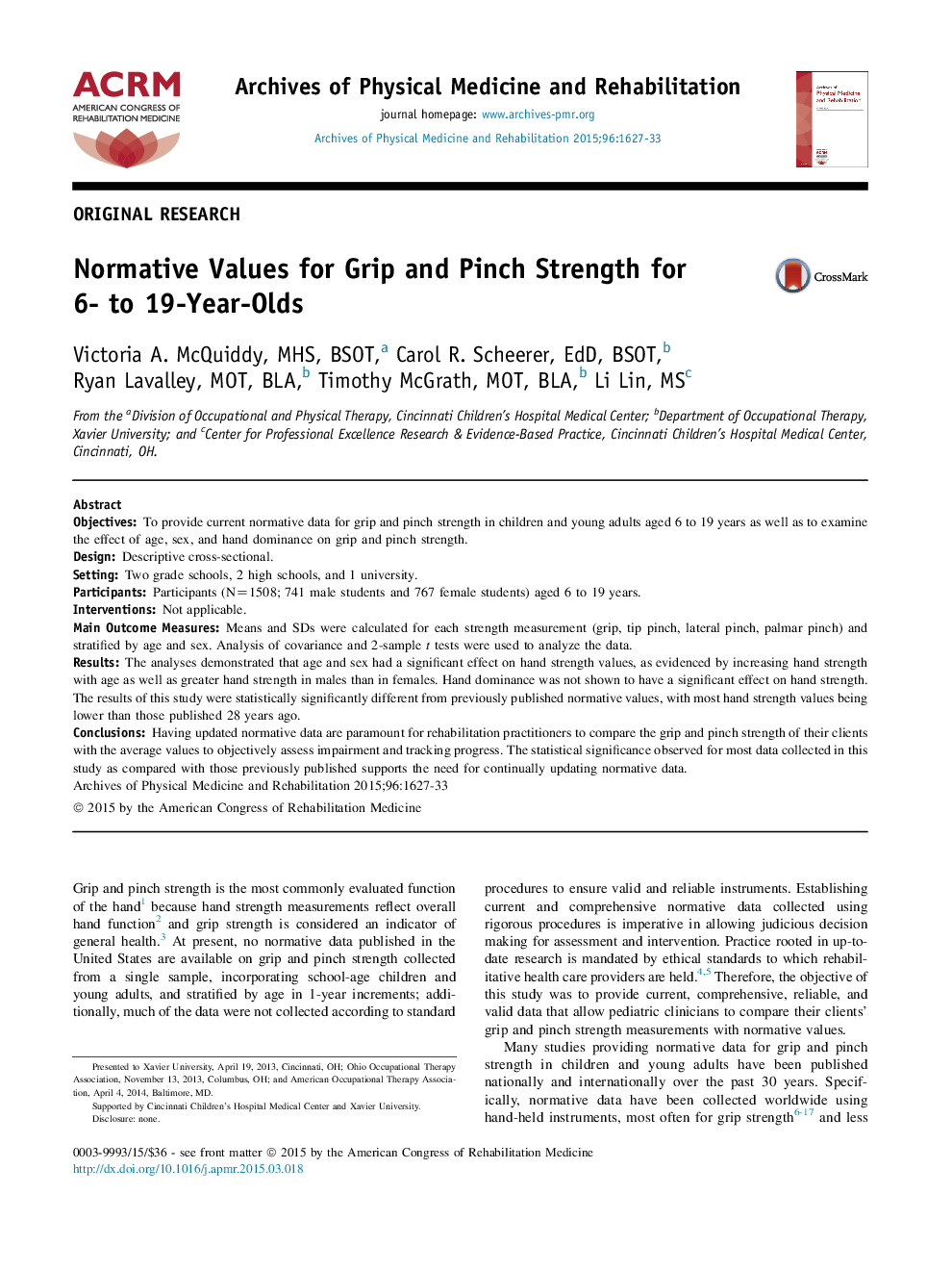| Article ID | Journal | Published Year | Pages | File Type |
|---|---|---|---|---|
| 3448070 | Archives of Physical Medicine and Rehabilitation | 2015 | 7 Pages |
ObjectivesTo provide current normative data for grip and pinch strength in children and young adults aged 6 to 19 years as well as to examine the effect of age, sex, and hand dominance on grip and pinch strength.DesignDescriptive cross-sectional.SettingTwo grade schools, 2 high schools, and 1 university.ParticipantsParticipants (N=1508; 741 male students and 767 female students) aged 6 to 19 years.InterventionsNot applicable.Main Outcome MeasuresMeans and SDs were calculated for each strength measurement (grip, tip pinch, lateral pinch, palmar pinch) and stratified by age and sex. Analysis of covariance and 2-sample t tests were used to analyze the data.ResultsThe analyses demonstrated that age and sex had a significant effect on hand strength values, as evidenced by increasing hand strength with age as well as greater hand strength in males than in females. Hand dominance was not shown to have a significant effect on hand strength. The results of this study were statistically significantly different from previously published normative values, with most hand strength values being lower than those published 28 years ago.ConclusionsHaving updated normative data are paramount for rehabilitation practitioners to compare the grip and pinch strength of their clients with the average values to objectively assess impairment and tracking progress. The statistical significance observed for most data collected in this study as compared with those previously published supports the need for continually updating normative data.
